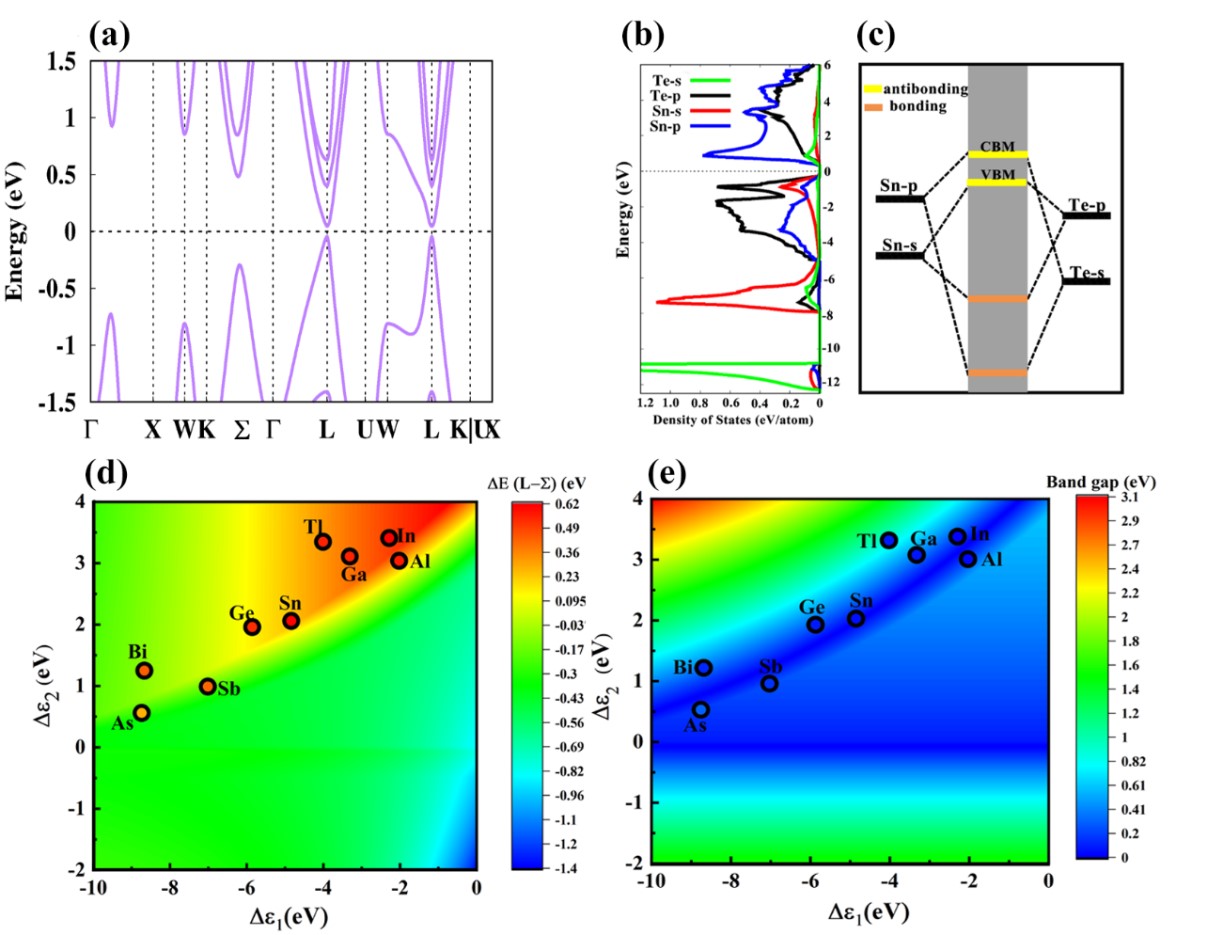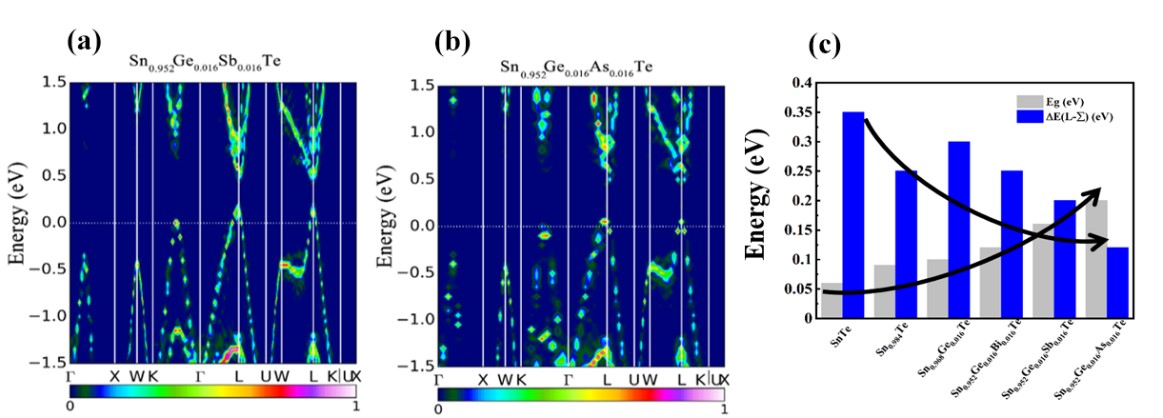Thermoelectric material (TE) is one of the important functional materials to realize the conversion of electricity from waste heat. Since SnTe contains toxic-free elements and possesses the high-symmetry rock salt crystal structure, it has gained much attention in the thermoelectric field. However, the pristine SnTe compound suffers from the poor electrical properties due to the high intrinsic carrier concentration, the small band gap, and large energy difference between light (L) and heavy (Σ) bands.
Therefore, hunting for the effective dopants and exploring the influence mechanism of dopants on the thermoelectric properties (electrical properties) of SnTe are of great significance for further improving its thermoelectric performance.
Researchers led by Prof. ZHANG Yongsheng from the Hefei Institutes of Physical Science of the Chinese Academy of Sciences recently found that the screened As/Sb elements can facilitate not only the band convergence of light and heavy bands (Delta E(L-Σ)) but also increasing the band gap (Eg) of SnTe, which improved its thermoelectric properties. Results were published in Chemistry of Materials.
After scrutinizing the electronic structure of SnTe and analyzing the dominant orbital contributions for valance band maximum and conduction band minimum, the researchers used cation substitution to adjust the thermoelectric properties of SnTe.
It is time-consuming to use Density Functional Theory supercell calculations to consider the effects of many different defects or dopants on the electronic structures of SnTe. Therefore, they constructed the simple tight binding model to quickly investigate the influence of various trivalent cations on the band structure, and screened the effective dopants of As and Sb, which not only reduced the Delta E(L-Σ), but also increased Eg of SnTe.
With band structure modifications, the electrical properties of SnTe were significantly improved.
They further synthesized the predicted samples to verify their thermoelectric properties. The result is encouraging. Ge-Sb or Ge-As co-doping in SnTe is favorable for the improvement of Seebeck coefficients, power factor, and the zT value. Besides, Ge-As co-doping in SnTe possesses the high weighted mobility and conversion efficiency.
Their work provides a methodology to efficiently screen the promising codopants in the SnTe-based materials and detect important candidates to improve the thermoelectric power generation and conversion efficiency.









